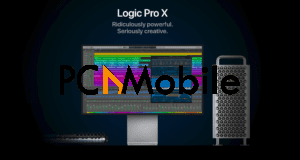

This follows the basic concept of “layers”, and OSX uses different terms like “Main Window”, “Active Window” and “Inactive Window” to describe their behavior. That new window again will be covered by the next window you open, or when you select the previous window. I’m sure that I’m not telling anything new that a standard window will be covered if you open another window on top of it. This is actually OSX-specific and applies to other apps too. Be aware of their special powers, but also their limitations.Īll the different windows that you can open in Logic can be grouped into two main types of windows, regular windows and floating windows. This is very critical, because those windows behave quite differently as we will see. Whenever you are working in a specific Logic window or move windows around, you have to be aware of what type of window that is. What I want to concentrate on is the management of already open windows. This is another aspect of your workflow, where you have to know the Key Commands or know the buttons to quickly open the windows you use the most. In this article, I’m not talking about how to open the various windows. Before you can do anything in Logic, you have to find and open the right window. But no matter if you use Logic on a laptop with a small screen or have a big setup with multiple computer displays, the first step in your workflow is the windows management. The bigger the screens on your computer and the more monitors connected to your computer, the more Logic windows (and other application windows) might be open at any given time.

This is a crucial part of your workflow, meaning “how efficient are you using Logic”. One important aspect that is often overlooked when using Logic is the “Art of Windows Management”. Do you know three window-related Key Commands: ⌘ tab (command-tab), ⇧ tab (shift-tab), and ⌘ ` (command-tilde)? If you haven’t incorporated them in your Logic workflow yet, then read on to see why it might be a good idea to do so. Opening, closing, selecting, clicking on them and interacting with them as the main interface – “the window into Logic”.

However, regardless of their personal preferences, all Logic users rely on one aspect in Logic all the time – the various windows. Some users love the Drummer and use it in every project, but others might think of it as a toy. Some users live in the Score Editor, others might never have opened it. Different users use different subsets of Logic. Logic Pro has so many features and functions, it can be overwhelming at times and it is almost impossible to know them all.


 0 kommentar(er)
0 kommentar(er)
